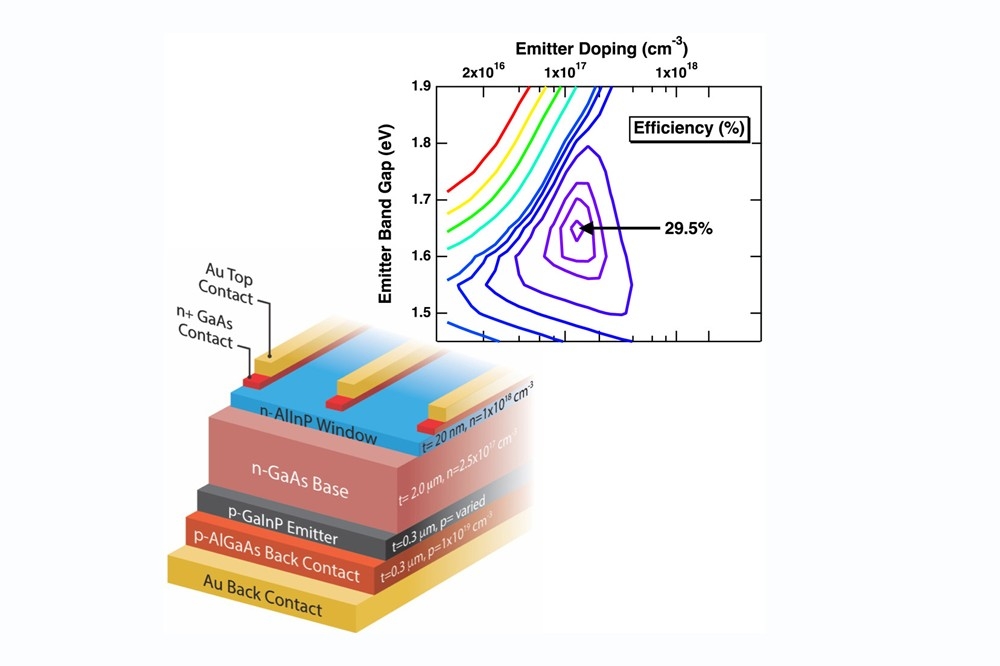NREL boosts efficiency of III-V solar cells

New research is another step towards making III-V cells more affordable for terrestrial applications
Researchers at the US Department of Energy’s National Renewable Energy Laboratory (NREL) have been able to squeeze some extra efficiency out of their solar cells through careful design of the materials in the cell stack.
Relying on both computational and experimental studies, the scientists grew a GaAs heterojunction solar cell using dynamic hydride vapour phase epitaxy (D-HVPE) with a certified efficiency of 27 percent, the highest efficiency ever reported for a single-junction GaAs cell grown using this technique.
This latest effort by NREL to make III-V solar cells more affordable for terrestrial applications, provides a road map to improving the performance of solar cells via optimisation of the doping and bandgap of the 'emitter' to minimise the impact of defects on device efficiency. The results are theoretically applicable to materials beyond III-Vs that use heterojunctions such as silicon, cadmium telluride, or perovskites.
“No matter how hard you try, with whatever method you choose to make them, solar cells will always contain some defects thanks to entropy. By using a heterojunction structure, with carefully designed emitter properties, you can minimise the adverse impact of these defects on efficiency, even though you haven’t done anything to reduce their concentration,” said Kevin Schulte (pictured above left), a scientist in NREL’s High-Efficiency Crystalline Photovoltaics group.
“Furthermore, the relative efficiency improvement scales with defect concentration. While the baseline D-HVPE cell already had a high efficiency, a device that had a higher defect concentration would receive a higher relative efficiency boost using the methods described in the paper,” added Schulte, who is lead author of the new paper 'Modeling and Design of III-V Heterojunction Solar Cells for Enhanced Performance', published in the journal Cell Reports Physical Science..
Along with the GaAs base layer, the solar cell relied on an emitter layer of GaInAsP. Together the two different layers make up the heterojunction. Researchers modelled the effect of varying the zinc doping density and bandgap of the emitter layer, which is realised by varying the relative concentrations of gallium, indium, arsenic, and phosphorus during layer growth, on cell efficiency.
The modeling identified optimal choices for these two parameters that maximize device efficiency. The researchers then synthesised cells using the guidance of the modeling and achieved model-predicted efficiency enhancements. The rear heterojunction solar cell that served as a baseline used an emitter comprised of GaInP and had a reported efficiency of 26 percent. By reducing the doping in the emitter and changing its composition from GaInP to the lower bandgap GaInAsP, the efficiency increased to 27 percent even though the rest of the device was exactly the same.
The benefits of heterojunctions are generally known, although experimental demonstrations of III-V heterojunctions are limited to a handful of combinations, the researchers noted.
“We took this concept that was known but not quantified this way and mapped it out,” Schulte said. “We showed the modeling matches what we see experimentally, showing that it is a powerful tool for solar cell design.”


































